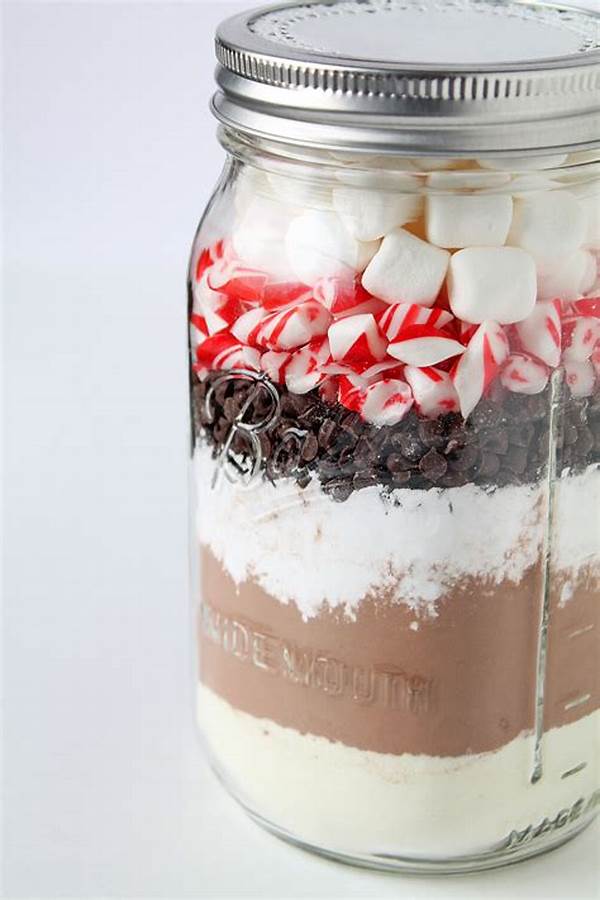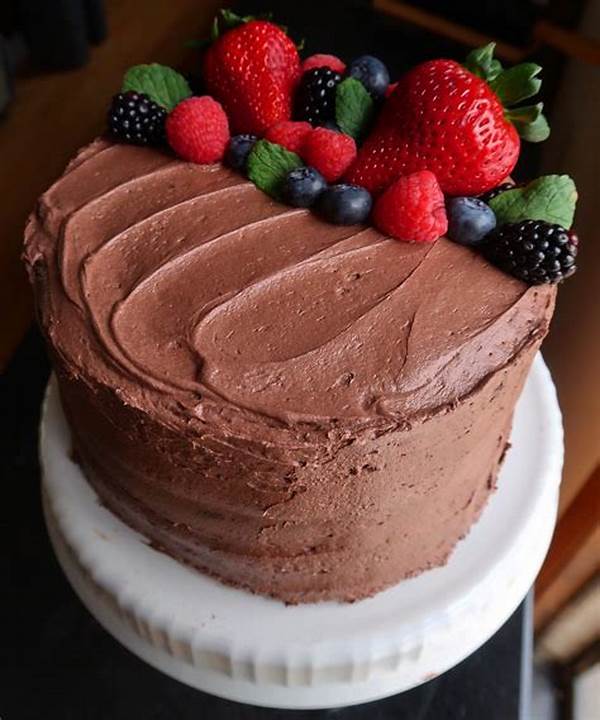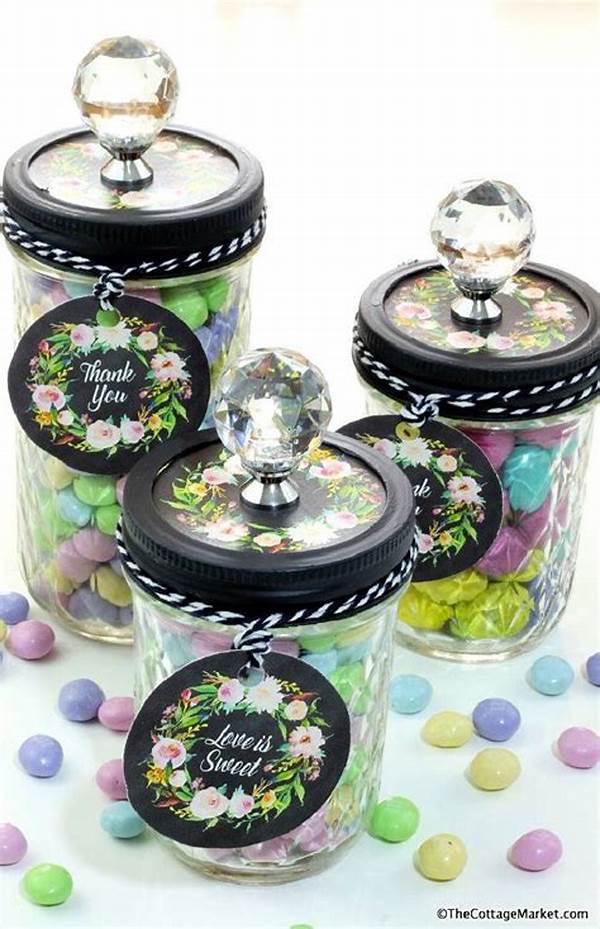Once upon a time in a quaint village nestled in the heartlands of Japan, a young girl named Aiko watched in awe as her grandmother skillfully wrapped pickled vegetables in a leafy bamboo sheath. It wasn’t just about preserving the taste, but a tradition that told tales of the land and its culture. This was traditional Japanese food packaging, a practice woven into the very fabric of time.
Read Now : Baking Essentials For Gluten-free
Elegance in Simplicity
Years later, Aiko, now a renowned chef, reminisced about those simpler days. The world had turned to technology, but one thing remained unchanged: the beauty of traditional Japanese food packaging. It wasn’t merely about keeping the food fresh; each wrap was an emblem of respect for nature and tribute to craftsmanship.
In traditional Japanese food packaging, each material carries its own story. Whether it’s the aromatic cedar barks used for wrapping or the earthy tones of bamboo leaves, the materials themselves speak of heritage and unbroken lineage. This method does not just protect the food but elevates its stature, turning a simple meal into a ceremonious experience.
As Aiko introduces traditional methods in her restaurant, patrons don’t just taste Japan; they unwrap stories bound intricately within layers of foliage and rice straw. It is a dance between elegance and simplicity, encapsulating the spirit of Japan in every parcel.
The Art of Wrapping
1. Nature’s Embrace: Traditional Japanese food packaging often uses materials sourced from nature, ensuring sustainability and biodegradability, reflecting a harmonious balance with the environment.
2. A Matter of Texture: The different textures in traditional Japanese food packaging, like the smoothness of rice paper, add an extra sensory dimension to eating.
3. Guardians of Flavor: These packaging techniques are adept at preserving flavors, protecting the contents from external elements while allowing subtle enhancements.
4. Cultural Insight: Each wrap and knot tells a cultural story, offering insights into the regional specialties and the uniqueness of Japanese culinary traditions.
5. A Presentation of Esteem: Beyond the functional aspect, traditional Japanese food packaging turns a gift of food into an object of regard, making every meal feel like a special occasion.
A Journey Through Time
In the bustling streets of Kyoto, Aiko found solace among the stalls selling food wrapped traditionally. It was a vivid tapestry of colors and textures. Busy markets often seemed timeless when viewed through the lens of traditional Japanese food packaging. Brown paper parcels tied with twine shared stories of distant lands and ancient customs, binding past to present in intricate artistry.
Vendors took pride in their craft, each wrapping a subtle promise of quality. The efficiency of modern plastic seemed almost dismissive alongside the graceful folds of a furoshiki cloth. Traditional Japanese food packaging isn’t merely a technique; it’s an art nurtured over millennia. The way rice cakes and sweet treats nestled snugly into bamboo baskets offers a methodic precision, a graceful nod to ancestors who cherished these practices.
For Aiko, these moments were a reconnection with her roots. She understood that each piece, each carefully selected component of traditional Japanese food packaging, was a link in an endless chain of custodianship, preserving not merely food, but the very essence of Japan itself.
An Emblem of Heritage
1. Bamboo Creativity: Bamboo is often a staple in traditional Japanese food packaging. Its natural resilience and availability make it a top choice for environmental-friendly solutions.
2. Intricate Layers: There’s a skill to folding the layers just right, emphasizing the importance of precision in traditional Japanese food packaging.
3. Preservation Mastery: Through generations, these techniques have perfected the art of preservation, ensuring when unwrapped, a dish tastes freshly made.
4. Environmental Embrace: Every piece of packaging reflects a deep-rooted respect for nature, promoting sustainability at every meal.
Read Now : Step-by-step Ganache Frosting Method
5. Artistry in Everyday Life: The designs used in the packaging are an everyday exhibition of Japanese artistry, showcasing dedication to aesthetic perfection.
6. Furoshiki Wonders: The use of furoshiki cloth in wrapping not only adds elegance but also reflects the cultural identity in traditional Japanese food packaging.
7. Culinary Artifacts: The materials used often contain cultural significance, making every piece a miniature artifact of culinary history.
8. A Celebration of Seasons: The choice of materials frequently changes with the seasons, reflecting the Japanese celebration of nature’s cycles.
9. Legacy of Taste: The practice ensures that traditional flavors are delivered intact, from the kitchen to the dining table.
10. Story-Laden Parcels: Each package carries with it a story, making each meal more than just sustenance but an experience steeped in tradition.
Transcending Time
On a cool spring morning, as cherry blossoms gently fell from the trees, Aiko’s restaurant became a tapestry of stories. Each dish she served was laced with the care traditional Japanese food packaging demanded. Every unwrapped piece spoke to her patrons, offering tales of farmlands blessed by the harvest, caretakers of tradition safeguarding each iota of history.
Her patrons delighted not just in taste but in the methodical act of unveiling. Each time someone delicately untied the knots of a furoshiki, they peeled back layers of narrative, threading through history with every savory bite. Traditional Japanese food packaging transformed her culinary creations into vessels of storytelling, transcending mere nourishment, quilted together with fading echoes of her grandmother’s wisdom.
The allure of traditional Japanese food packaging surged through her kitchen, weaving its spell across her tables. It was a bridge, spanning across eras, made from humble fibers of tree bark and linen. Aiko knew she wasn’t merely a chef; she was a storyteller. And through every fold, every wrap, she whispered stories – of the past, the present, and an unbroken legacy into the future.
Cherished Traditions
Traditional Japanese food packaging remains an enduring chapter in the story of culinary artistry. As Aiko served her guests, the tapestry of tradition came alive, interlaced with tales she once heard as a child. Each item wrapped, bound with care, was a testament to a craft honed through centuries, rich in cultural wisdom handed down like a cherished family heirloom.
In Aiko’s reverence for these practices, she found not only nostalgia but a path to preserve and pass forward. Through the traditional Japanese food packaging, Aiko shared not just meals, but visions of her homeland – vibrant palettes of history and emotion encapsulated within each meticulously wrapped delicacy. Her restaurant became a sanctuary, where traditions weren’t just remembered but celebrated anew.
Weaving Stories
As the sun dipped behind the horizon, Aiko’s day concluded with the comforting rustle of paper and cloth. Traditional Japanese food packaging was more than preservation; it was an embrace of time-honored credibility, maritime tales that connected back to generations who came before. And so, Aiko, in her culinary craft, continued to weave stories upon stories, aligned with nature’s elegance, within every carefully wrapped meal. Each parcel a promise, not just of taste, but of an inherited story carving itself eloquently into tomorrow.




